Final Report; Aerial thermal helicopter survey of feral deer in the Cardinia Creek Catchment area.1/18/2022
0 Comments
Mike Hall, October 2021 What a saga this has been! Covid, as for so many enterprises, has not been our friend. It delayed our planned aerial survey for over a year, and similarly for the vegetation (ground) survey. Hopefully we will be on our way again soon. A recapIn late 2019, the CDMC received funding of $25,000 from Melbourne Water to conduct survey work in the Cardinia Creek catchment as a part of their Liveable Communities grant scheme. Though the original plan was to use most of this funding for a camera-trap survey, this proved to be beyond the budget if we wanted meaningful data. After a lot of head scratching and conversations with representatives and scientists from Melbourne Water and Parks Vic, we decided on a new vegetation survey method which had been developed by Dr Ami Bennett of Melbourne University. This survey lends itself very well to the use of citizen science and does not require expensive equipment. This reduction in cost means we will have funds left over to gain the services of a research scientist to help with both the implementation and interpretation of the survey and the data generated. In May this year, after many covid delays, we were finally able to hold a field training day, conducted by Dr Bennett herself. Twelve local community members, our “citizen scientists”, were taught the survey technique, with the aim of them training further citizen scientists to conduct the survey. It was a lovely day, we all learned heaps, became experts in wombat, roo and deer poo and had a lot of fun. All up we so far have about 25 interested citizen scientists either ready to go, or waiting for the chance to be trained up soon. What does the survey entail?The survey is a vegetation impact and faecal scat count survey. The method involves generating random transects in the landscape 150m long. Working in pairs, observers move along the transects, and at 5m intervals assessments are made of the vegetation damage and faecal scat counts in four quadrants, N. S, E & W. At the same time, observations of other deer damage is recorded ie tree rubbing, wallows, resting sites and trails. Each transect takes between 1 ½ to 3 hours. These findings are recorded on a chart, from which the data can be downloaded and the results tabulated. What outcomes does the survey give?With the vegetation damage being split into that which is above one metre and that which is below one metre, it allows an estimate of the relative damage being done by deer against that being caused by native animals – native animals do very little browsing above one metre. The purpose of doing the scat count is that it gives a very good relationship over time with the deer population density – ie as the deer number rises and falls, the scat count rises and falls in a linear relationship. Being able to graph the amount of vegetation damage against the rise or fall of the deer population will finally give the scientific and local community data on the severity of deer related damage matched against population densities. What are the benefits to the CDMC and the broader community?The CDMC are committed to protecting our environment through humane deer reduction. The information generated by the survey will firstly quantify the amount of damage being done by deer. There is very little scientific data currently to hand about the effect of deer on the environment, nor which environments are the hardest hit and by which species of deer. This sort of data is critical in understanding this and in working out how to protect the most sensitive environments. Secondly, being able to map the recovery (or decline) in the environment as deer numbers fall (or rise) will give us an indication as to whether the current culling efforts are having an effect both in deer population density and vegetation health, where they are having an effect and how many deer will need to be removed for the environment to recover. What now?As soon as covid allows, we will be able to get back into the field with all our citizen scientists ready for either further training or immediate action. The transects have been identified and the required equipment purchased. With the warming of the weather and an easing of restrictions, you should see us out there within a few weeks or so. Getting involvedThis is a citizen science project which will have university oversight. If you are interested in any of the following:
To learn more or register your interest, contact the email below. But that is not allWe have recommenced our discussions with Deakin University (through Prof. Euan Ritchie) and hope to have a research scientist on board to oversee and interpret the results of our citizen science data as it comes in. We hope this will be the beginning of a long term relationship with Deakin Uni in helping to manage and understand the deer problem in the Cardinia Creek catchment. We will also be looking at involving students from the local high schools in this and other projects. Watch this space. For further information or if you would like to be involved in this project, please contact us at: [email protected] Monitoring deer – the what, the where and the how (many). Australia doesn’t have a lot of data on deer. Until now we haven’t really needed it. Deer numbers were small. They posed no threat to primary producers, no threat to the environment and the native animals who live there, no threat on our roads. But in the last few years this has changed. Their numbers have increased exponentially and now we are beginning to see just how destructive they can be. So now the scientific community are playing catchup: how many deer are there? What species are there and where are they? How do they move and behave in the Australian landscape? What do they eat, what weeds do they distribute, what effect are they having on our waterways and peatlands, what diseases do they carry, and pass on, … there is a long list of unknowns, few knowns. Government agency and environment groups are becoming increasingly active in their efforts to gain some of this data. Below is a precis of some of the more common methods being used: Animal surveys: Camera-trap surveys Camera traps are motion and/or infrared sensitive cameras which are strategically placed and left in situ to take images of animal movement in their vicinity. They are usually left in place for periods of weeks, after which their images are downloaded and visually assessed for species types, numbers and locations. Camera-trap surveys will usually be trying to ascertain one of three types of information: Relative abundance
Occupancy
Density
Advantages
Disadvantages
Future
Aerial surveys Aerial surveys are done either by helicopter or drone. Helicopter surveys can be either manned (ie. visual only), use infrared cameras or both infrared & visual; drone surveys use infrared cameras only. Drones can be either the vertical or horizontal launch types. Surveys are normally done at dawn or dusk when the deer are more active and come out of the bush. This also allows better differentiation between the heat signature of the animals and the cooler background. Sometimes this is not possible in more populated areas due to concerns of disturbance, and surveys may need to be extended into the mornings and afternoons. The data gathered is then assessed and mapped to give an indication of the location and density of the deer population. This is increasingly being aided by species recognition software. Aerial surveys are becoming increasingly popular as their costs decrease and the technology improves. Advantages Helicopter over drone:
Drone over a helicopter:
In general, aerial surveys are of greatest benefit over large areas, with large numbers of animals and with open vegetation. Disadvantages
Future
Direct visual surveys Just what it says – simply people observing deer in their own surrounds, logging the data, including date, time & location and other observations. It can be with or without binoculars or, if after dark, with a thermal imaging scope. With proper scientific input, this data can be quite valuable. Not all surveys require advanced technology nor large amounts of expertise. This makes visual surveys a good mechanism for engaging the community. The DeerScan app is an example of a direct survey technique, where members of the community can use the app to record sightings of deer. These records can include other signs of deer as well, including finding deer scat, wallows, tree rubbings or even hearing deer. CDMC are registered as a Group within DeerScan. For more information on DeerScan and how you might be able to help us monitor deer, read the article on DeerScan under Get Involved on our website. Some other methods of recording animal sightings, including deer, is the Atlas of Living Australia or iNaturalist, which are available free to all. Radio trackingWhat are theyThis requires the placing of a radio tracking device on each animal. The device emits a signal which can then be used to locate the animal. Some of these need to be tracked using a hand held aerial, whereas others can be picked up and located by satellite. Advantages
Disadvantages
Radio tracking would be a wonderful tool to add to the deer knowledge base, as there is scarce information about the behaviour of deer in our landscape. Understanding this would be a wonderful help in planning for better techniques in controlling deer. Unfortunately it is extremely expensive and due to animal ethics reasons are usually conducted by a university or other scientific organisation. Faecal pellet surveys Not the most romantic of surveys, but highly effective. In this technique, regular counts of faecal pellets are conducted at nominated sites over a regular timeframe. This is then compared over time to see if the counts decrease or increase. Advantages
Disadvantages
Note: The use of DNA analysis of faecal samples can also be very valuable in identifying species, population sizes (variation found between samples) and the origins and movement of deer over time. It is not commonly done due to expense and the expertise required. Vegetation surveys There are three major categories of these:
Advantages
Disadvantages
Other There are several other areas of measuring deer impact, such as loss of farm income, monitoring costs of deer mitigation, costs of deer vehicle collisions. Too many to cover in this article. If you have further information in this area, or questions relating to any of the above, we would love to hear from you. Please email us at [email protected] Why has the Victorian government persisted with classing deer as “protected” ?
Commonwealth and state governments recognise that deer are a key threatening process in the landscape; they are having a major financial impact on farming communities, are threatening biodiversity and are an increasing danger on our roads. Deer are not native. Victoria is the last remaining mainland state to keep listed deer as a protected species. All the others have declared them as a pest species, including now NSW, who changed their status in 2019. In Victoria, there is no official stated justification for their protected status. However, following discussions between government officials and the Cardinia Deer Management Coalition (CDMC), the following reasons seem to prevail: 1. Changing the status to pest animal will reduce the government’s ability to regulate the manner in which deer are hunted. For example, hunters may not use the appropriate calibre of weapon or weight of bullet, resulting in the inhumane killing or injury of deer. They are also concerned about the use of spotlighting in relation to the hunter’s code of a “fair chase.” 2. Changing the status to feral animal may cause a financial and management burden to farmers. This is because landowners would then be compelled to control deer on their property. It would also further compel government agencies to control deer on public land. 3. Unregulated hunting may encourage “rogue” hunters to target deer, especially in the state parks and private land. This could become a public safety issue as less skilled and less ethical hunters become more active. 4. Changing the status to pest species is not required anymore because of recent changes to legislation removing the protected status of deer on private land if deer are causing harm or damage. This means landowners can control deer (except for hog deer) on private land without a permit. The CDMC are strongly of the view that deer should be declared as a pest species in Victoria, as they already are in Queensland, South Australia, West Australia, The ACT and the Northern Territory. This would bring them into line with the other states and reflect in words and law the recognised seriousness of the problem of deer in the Australian landscape. In giving our reasons, we will address each of the four topics listed above: 1. "Reducing the government’s ability to regulate the manner in which deer are hunted."
2. "A financial and management burden to farmers …", "compelled to control deer … "
3. "Unregulated hunting may encourage illegal hunters …"
4. "Changing the status to pest species is not required anymore because of recent changes to legislation."
The impact of deer on private property and costs to our farming community are escalating rapidly
When the first community meeting to discuss the issue of deer in our catchment was organised by the Upper Beaconsfield Conservation Group, environmental damage was at the forefront of their thoughts and concerns. It quickly became apparent during the Q & A open forum session, the issue of deer encroaching on private land was possibly THE big issue for most people there. Boundary fences were no barrier to deer, who can leap over a two metre fence from a standing start. Landowners had no control over the deer and the damage being caused in a single night could be devastating. We have had correspondence from private landowners like: “I have read the interesting article in the Upper Beaconsfield Village Bell, in reference to the feral deer problem. My property is situated on Wellington Road, and we are visited daily by a herd of deer, which is causing damage to paddocks, and garden! I am actually at my wits end as to how this constant invasion will ever cease.” One landowner’s reply to a survey asking farmers to quantify the value of damage to their farming enterprises was eye-opening: “Our biggest impact is on our fruit trees. Trees that are 6-30 years old and 6 m tall can be badly damaged in one night. It is very disheartening, expensive to replace (cost of new trees, and labour and machinery hire to removal the old trees and putting in a new ones) and then there is the economic cost of the fruit lost each year until the new tree is fully mature (15 years).” All up this farmer put a conservative estimate of replacement cost & lost income per tree before reaching maturity of $1610. As well as this there is the cost of erecting 2m high deer proof fencing around the property, which regularly need repairing due to damage caused by deer. Among the hardest hit are the Landcare communities. Revegetation works they have been carrying out for decades are being hard hit as the usual tree guards offer no protection against deer. For example, a Bessie Ck Landcare property owner wrote recently that “our experience is that the deer pass through so damage is sporadic but definitely varies from 100% destruction for a re-vegetation area to persistent pruning causing stunting over years, to times when nothing happens for a season or two.” A Tonimbuk farmer was nearly in tears at a recent community meeting as he described the devastation wreaked by deer on the revegetation works he had carried out on his own property since the 2009 bushfires. There are some landowners who “don’t mind bambi at the bottom of the paddock.” Deer are a beautiful animal and can’t be blamed for being transported to Australia. And they don’t “intend” to do harm. But harm happens, and bambi doesn’t stay in that paddock, but goes into the next, and the garden next door, and the orchard over the road. (For a transcript of a letter from one of our farming members written in response to the DEWLP Draft Deer Management Strategy, read here.) Due to their sheer size, speed & escalating numbers, deer are now a major danger on our local roads.
In 2015 deer overtook cattle as the fourth most common animal collision reported to the RACV in Victoria. Deer are now commonly seen beside and crossing the roads in our area, and local panel beaters have noted an increasing number of deer related repairs. Deer are a serious concern to motorists due to their absolute lack of road sense and to their size and speed. A fully grown sambar can weigh over 400kg and, with a high centre of gravity, this can be a lethal combination. This means that in a frontal collision at speed, the body of the deer will likely come over the bonnet, through the windscreen and into the cabin of the car. Even the smaller fallow deer at up to 200kg would be a serious threat. Australia has already had its first fatal deer accident, although fatal accidents are well known in North America. Some general advice:
Deer are not native to Australia. They have only been here since about the 1860s. Along with the likes of rabbits, foxes, sparrows, blackbirds and many other species, they were originally introduced into the environment by homesick English settlers, both for sentimental reasons and hunting enjoyment. In the 1970s and ‘80s, deer farming became popular as a new way to generate farm income. As with many boom industries, the bust soon followed and many farmers simply opened their gates and let the deer out.
It seemed for a while that deer were quite benevolent in our landscape: cute little bambis standing by the road verge, quietly nibbling away on the grass with no adverse effects, effortlessly leaping over the fence as we drove by. Unfortunately, it was not to remain so. We are not yet sure why, but things have suddenly changed over the last two decades. Roadside sightings are no longer rare nor special and we have now had our first deer related fatalities on the nation’s roads. Farmers now find themselves competing with deer on a daily basis. And the Australian environment, especially in the creek valleys, is being trashed. Deer are known as “ecosystem engineers”. These are organisms that create, significantly modify, maintain or destroy a habitat. Ecosystem engineers can have a large impact on the species richness and landscape-level heterogeneity, especially when such an organism arrives in a new area. This is happening in the Cardinia valley right now, to such an extent that both Melbourne Water and Parks Vic have both started to take serious action to limit deer numbers to preserve the natural environment. Deer damage the environment in a number of ways. Being browsers, they eat a lot of our native shrubs, such as pomaderris and muttonwood, along with the emerging seedlings of the trees, reducing food sources and nesting sites for native wildlife. When the deer population reaches a certain size this prevents regrowth of the various forest species. They also rub their antlers on the trees, effectively ringbarking and killing them. Unlike kangaroos and wallabies, they are cloven hooved, which means they cause impaction of the ground wherever they walk, leaving hard trails through the bush. In the swampy areas they leave pug marks in the ground or worse, create mud wallows, damage the creek banks, increasing siltation and water turbidity, affecting the fresh water crayfish and the platypus that live on them. Feral deer have been described as “the most serious invasive problem” in NSW and the ACT. The situation is arguably worse in Victoria. Our environment, still struggling to cope with the impact of feral cats and foxes, and feeling the early effects of global warming, can not afford another threat to its existence. Below is a letter written by local Rosalie Counsell in response to the Draft Deer Management Plan. It is split in two sections; A) preamble, and B) specific response to the plan.
A) Preamble We live on a 24 hectare property in Harkaway, in the peri urban foothills to the Dandenong Ranges. It has several heavily vegetated gullies that run down to the belt of bushland that follows the Cardinia Creek. Over the past decade, Sambar and Fallow deer have become an increasing problem. They use these wildlife corridors as cover for their own movements, and are continually breaking down fences, damaging young trees (including ones we’ve planted) and encroaching on our pasture. As a result of their growing numbers (we’ve seen herds of twenty and thirty), we now struggle to run a dozen steers on the place. We have a couple of hunters who come when they can, but the occasional kill they achieve is a drop in the ocean, and serves only to make the herds more canny. While ignoring us as we shout and wave our arms at them, when they spy a hunter, they vacate to the only one of our three adjoining properties where they seem to know they are safe. We, and our neighbours, are starting to despair. The deer numbers – Fallow and Sambar – are mushrooming. As well as destroying our treasured bush environment, they are invading our gardens, gradually moving further and further from the creek area and presenting an increasing hazard on our roads. It is only a matter of time before a vehicle will hit one, and a collision with a Sambar could easily kill someone. We believe that management of the deer populations in the peri urban areas is critical. Urbanisation is going to make normal control measures increasingly difficult to implement, yet it is here that their adverse impacts will be most visible. Once someone is killed as a result of a collision with a deer, or their numbers cause even more significant issues for the catchment areas, and/or they start encroaching on semi-urban gardens, the problem could escalate to nightmare proportions. We believe that the main problem with this draft strategy is that it starts and ends with the wrong emphasis – namely that deer are recognised as a valuable hunting resource. The fact that deer may have become a valuable resource to the hunting fraternity should not blind us to the fact that they are a large, destructive introduced species that are posing a major, expanding threat to a wide range of community assets and values across the state. No invasive exotic species released deliberately or accidentally into the wild should be protected by law. CONCLUSION The control of feral deer is too overwhelming a problem for ad hoc, individual measures. Sporadic guerrilla-type skirmishes on the periphery will achieve nothing and serve only to discourage all concerned. What we are facing here is an invasion. It needs to be handled with the same principles of military planning, co-ordination and determination as would apply to fighting a war. And as with any invasion, the sooner and more decisively we respond the better. The enemy is already at our gates. 29 October 2018 B) Specific responses to the draft strategy Our position can be summed up as follows:
|

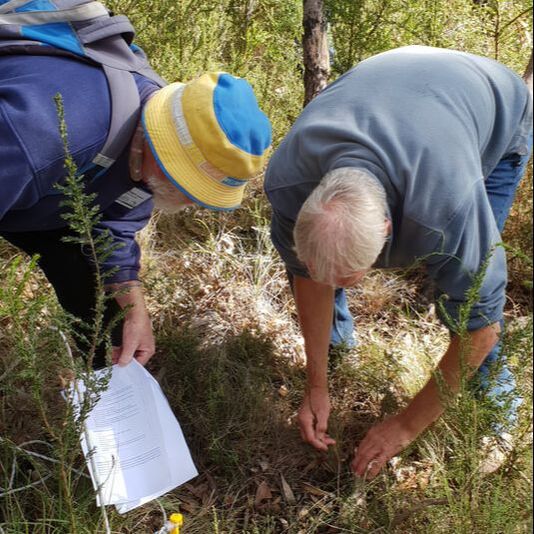
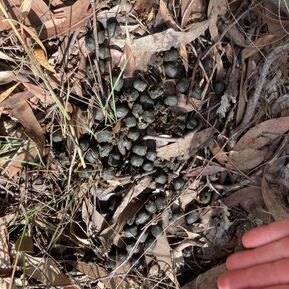
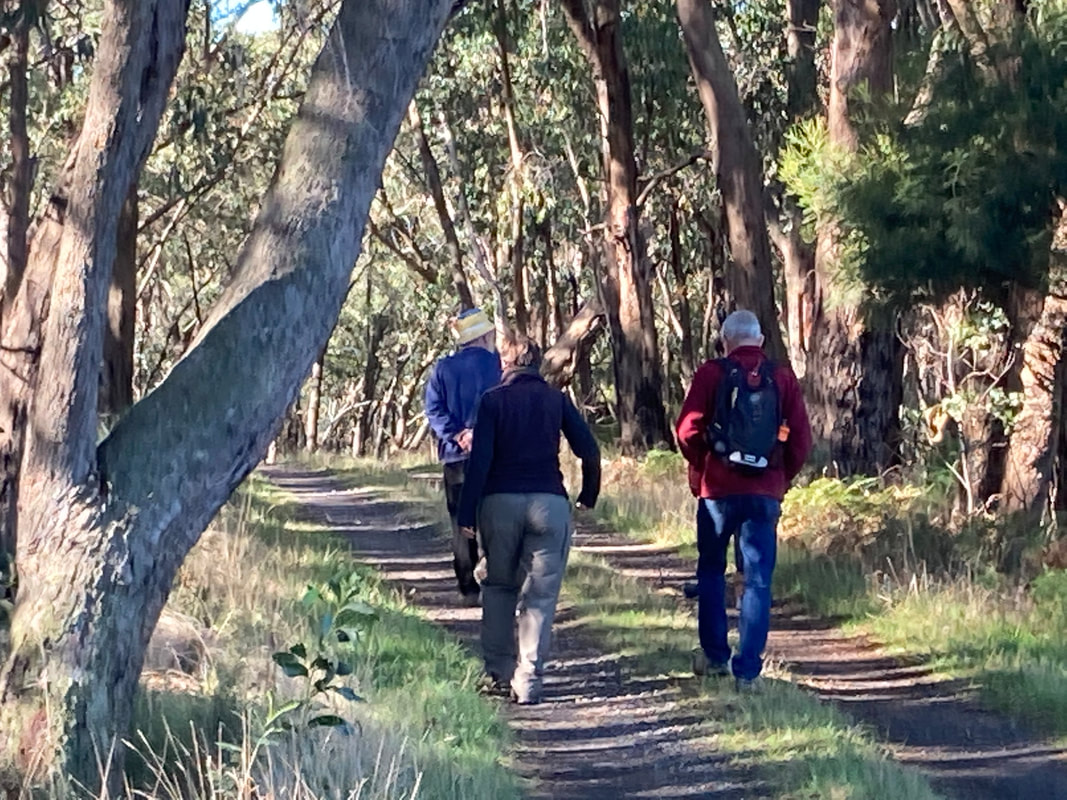
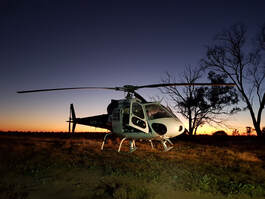
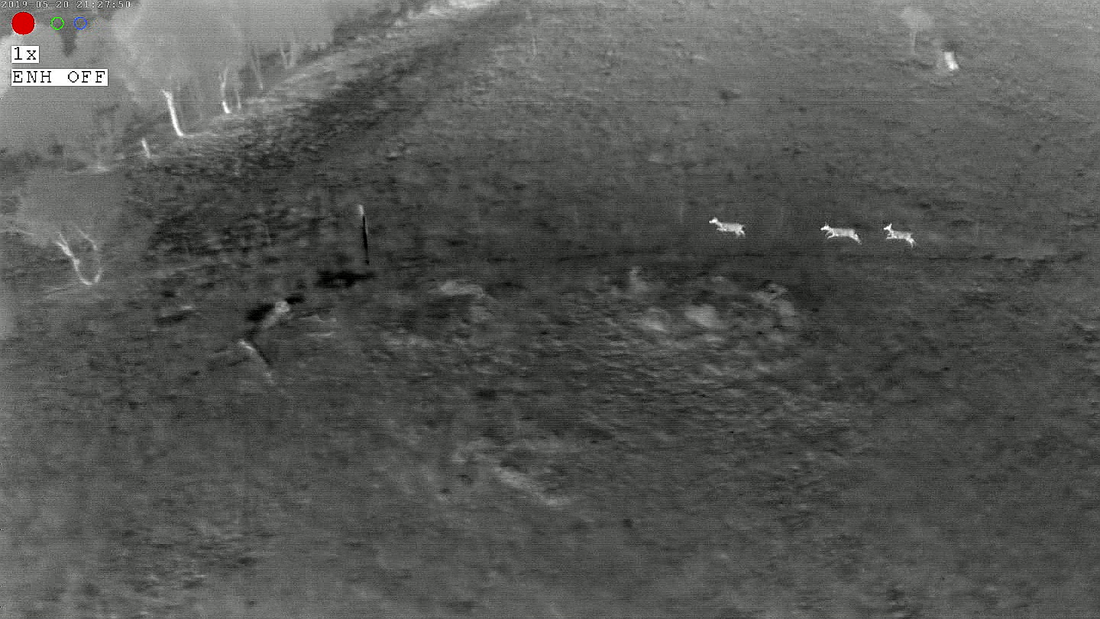
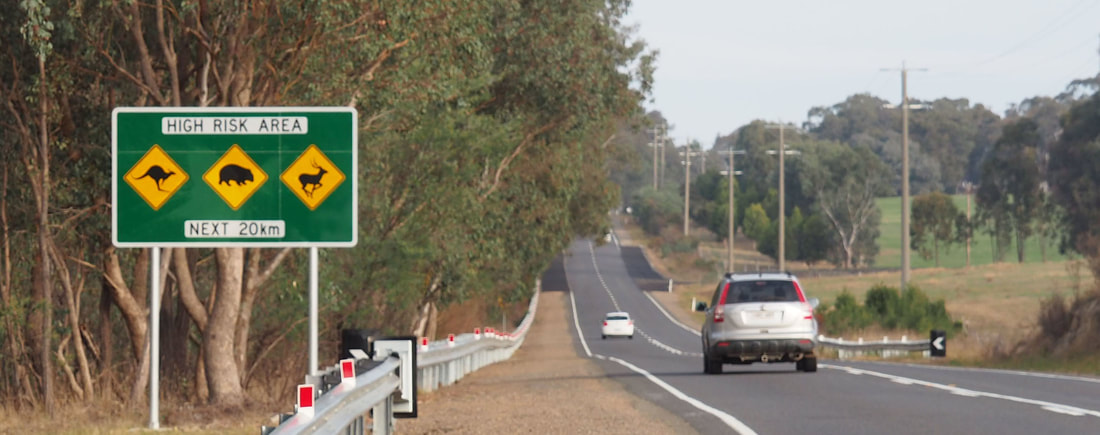
 RSS Feed
RSS Feed
